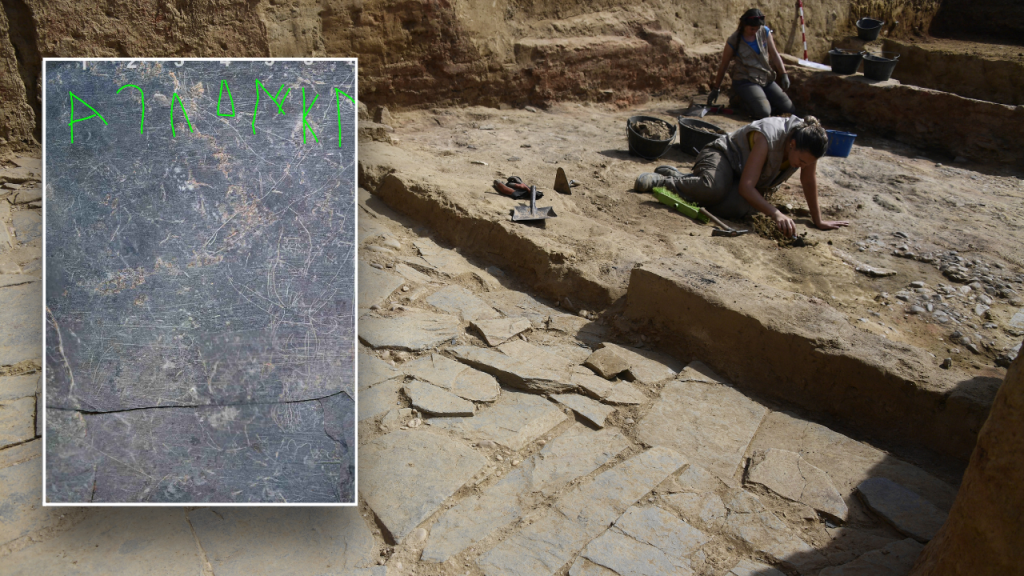Spanish archaeologists recently announced the discovery of an ancient stone with perplexing symbols carved onto it. The symbols, believed to be an ancient alphabet, make up the third-ever “southern Paleo-Hispanic alphabet of which there is evidence,” according to the Spanish National Research Council (CSIC). The stone was found at the Casas del Turuñuelo in the southwestern Spanish province of Badajoz, within Tartessian ruins dating back to 600 B.C. The Tartessos civilization, which existed over 3,000 years ago, is considered “lost” due to the scarcity of remnants, and the discovery of the slate is part of the “Building Tartessus” project aimed at characterizing Tartessian material culture.
The stone tablet showcases a sequence of 21 signs drawn within its framework, along with figures of warriors. According to Joan Ferrer i Jané, a researcher from the University of Barcelona, the artifact contains an alphabet with 27 signs, making it the only complete one known to date. This discovery sheds light on the ancient Tartessian civilization and provides valuable information about their language and writing system. The tablet is considered incomplete, with experts believing it may have originally contained as many as 32 symbols, and possibly even more if a potential sign isolated on the side is part of the alphabet.
The study of the tablet and its symbols comes as a complete surprise to experts, as the Tartessos civilization has been shrouded in mystery due to the limited archaeological remains left behind. The main objective of the “Building Tartessus” project is to uncover and analyze the architectural elements of the ancient Tartessian buildings to gain insight into the civilization’s material culture. The discovery of the ancient alphabet on the stone tablet adds a new dimension to the project’s research, providing researchers with a clearer understanding of the language and communication methods used by the Tartessos people.
The newly discovered alphabet on the stone tablet presents a unique opportunity for researchers to delve deeper into the linguistic and written communication practices of the ancient Tartessos civilization. By identifying and deciphering the signs and symbols on the slate, experts can piece together a more comprehensive picture of the civilization’s language and culture. The significance of this discovery lies in its potential to unlock the secrets of a long-lost civilization and to expand our knowledge of ancient societies that once thrived in the Iberian Peninsula.
The significance of the discovery of the ancient stone tablet with an alphabet of 27 signs related to the Tartessian civilization cannot be overstated. This finding offers a rare glimpse into the language and communication methods of an ancient civilization that is often referred to as “lost” due to the lack of archaeological evidence remaining. With further research and analysis, researchers hope to uncover more information about the Tartessos people, their writing system, and their culture, ultimately shedding light on an enigmatic civilization that existed over 3,000 years ago.
Overall, the discovery of the ancient stone tablet with the mysterious symbols and alphabet related to the Tartessian civilization represents a groundbreaking development in the field of archaeology. This finding not only provides valuable insights into the language and communication practices of an ancient civilization but also opens up new avenues for research and exploration into the enigmatic world of the Tartessos people. The study and interpretation of the symbols and signs on the stone tablet are crucial for unraveling the secrets of a long-lost civilization and expanding our understanding of the ancient societies that once inhabited the Iberian Peninsula.


